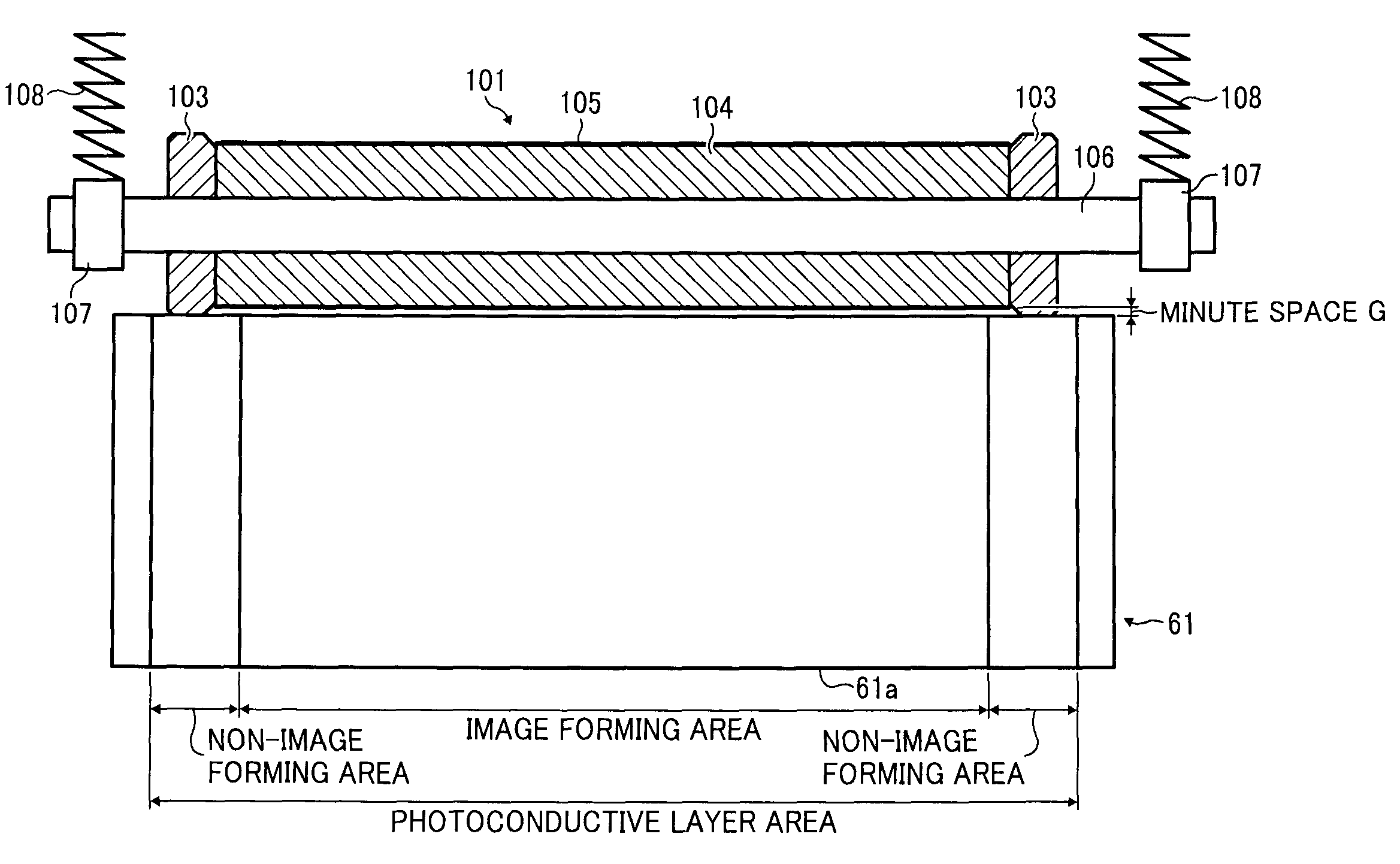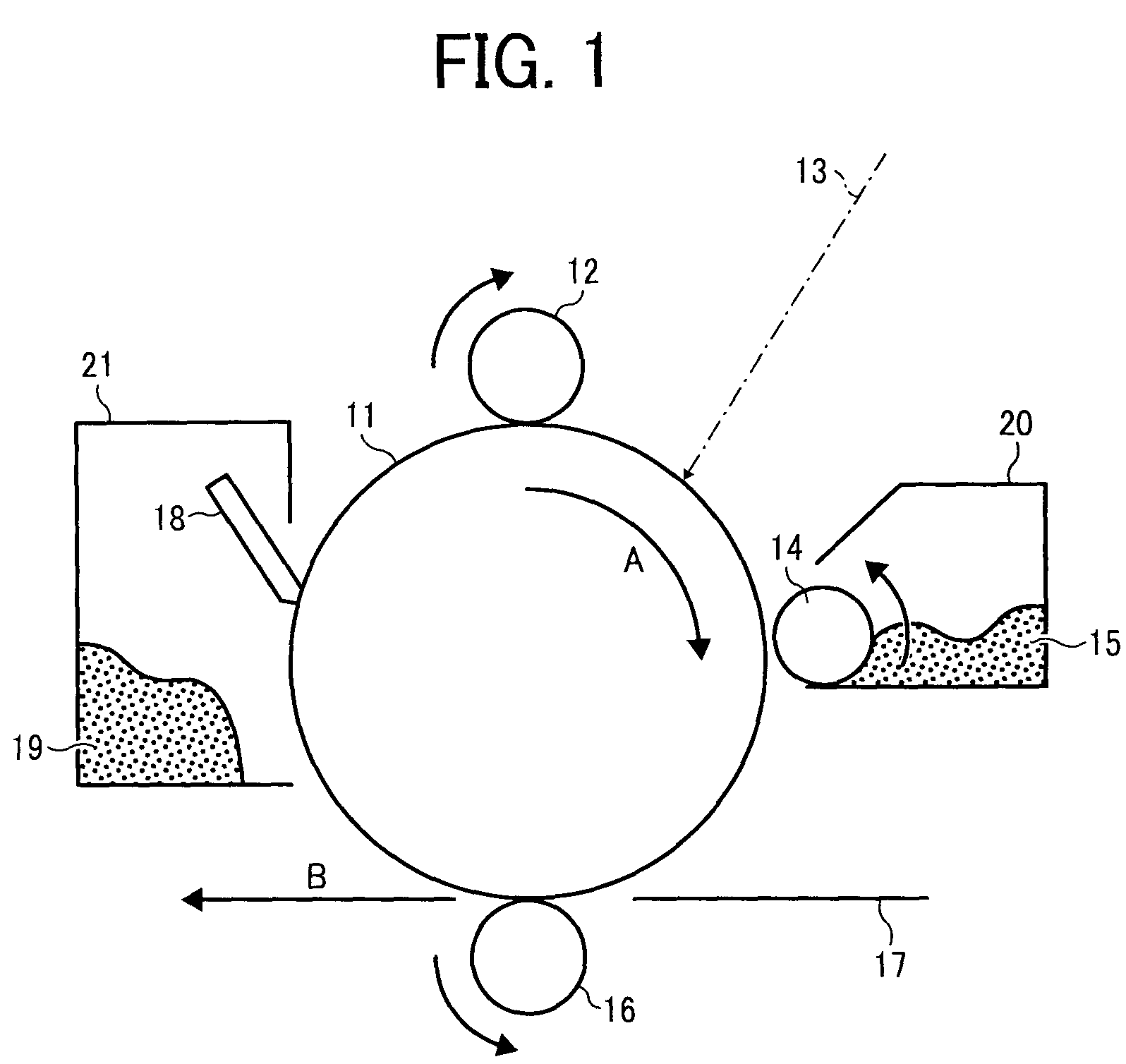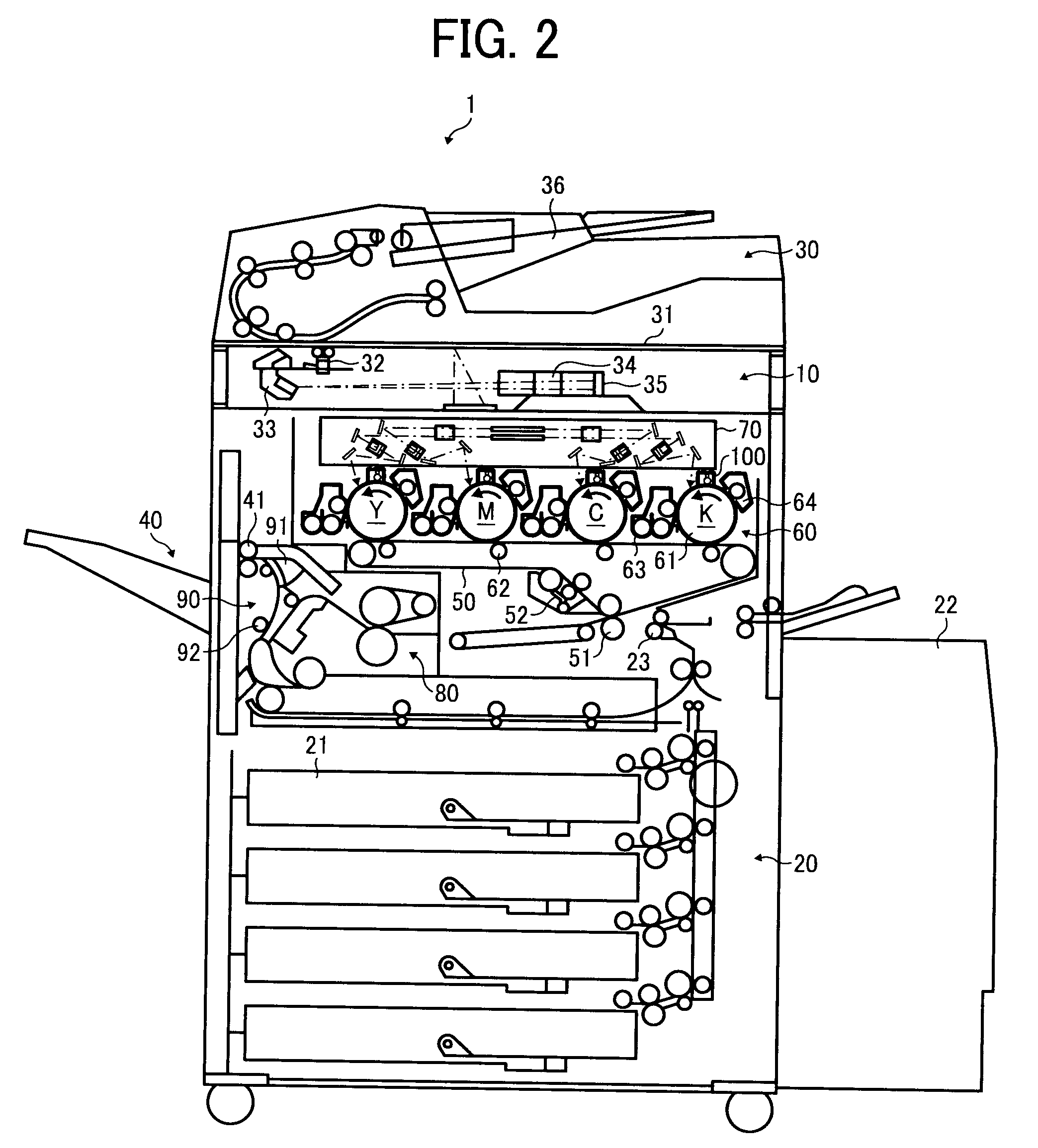Conductive member, process cartridge using the conductive member, and image forming device using the process cartridge
a technology of conductive parts and process cartridges, which is applied in the direction of electrographic process apparatus, instruments, and discharges, etc., can solve the problems of reducing the charging performance of toners, difficult to uniformly maintain space, and water absorption properties that cannot be easily absorbed, so as to increase the blending ratio of thermoplastic resins, reduce water absorption properties, and increase resistance
- Summary
- Abstract
- Description
- Claims
- Application Information
AI Technical Summary
Benefits of technology
Problems solved by technology
Method used
Image
Examples
embodiment 1
[0128]A resin composition (volume resistivity value: 2×108 Ωcm) in which the following prescription 1 was melted and kneaded at 220° C. was coated on a core shaft 106 (8 mm in outer diameter) which is a conductive supporting body made of a stainless-steel by means of injection molding, and an electric resistance-adjusting layer 104 was formed. The typical structure of the blended fibrous polymer is as illustrated in FIG. 6.
[0129]Prescription 1
[0130]A: IRGASTAT P18 (made by Chiba Specialty Chemicals, Inc.) 55 pts.wt.
[0131](polyether ester amide, A contains sodium perchlorate)
[0132]B: Meta from aramid fiber (Conex 2.2 dtex, 1 mm made by Teijin Techno Products Limited) 5 pts.wt.
[0133](Fibrous Polymer)
[0134]D: ABS resin (DENKA ABS, GR-3000 made by DENKI KAGAKU KOGYO KABUSHIKI KAISHA) 40 pts.wt.
[0135](Thermoplastic Resin of High Hardness)
[0136]With respect to 100 pts.wt. of the mixture of A, B and D,
[0137]E: polycarbonate-glycidylmethacrylate-styrene-acrylonitrile copolymer (MODIPER C L4...
embodiment 2
[0143]A resin composition (volume resistivity value: 2×109 Ωcm) in which the following prescription 2 was melted and kneaded at 220° C. was coated on a core shaft 106 (8 mm in outer diameter) made of a stainless-steel by means of injection molding, and an electric resistance layer 104 was formed. The typical structure of the blended fibrous polymer is as illustrated in FIG. 7.
[0144]Prescription 2
[0145]A: TPAE-10HP (made by FUJI KASEI KOGYO CO., LTD.) 50 pts.wt.
[0146](Polyether Ester Amide)
[0147]B: Para form aramid fiber (Technora 1.7 dtexd, 1 mm made by Teijin Techno Products Limited) 10 pts.wt.
[0148](Fibrous Polymer)
[0149]D: ABS resin (DENKA ABS GR-0500 made by DENKI KAGAKU KOGYO KABUSHIKI KAISHA) 40 pts.wt.
[0150](Thermoplastic Resin of High Hardness)
[0151]With respect to 100 pts.wt. of the mixture of A, B, and D,
[0152]E: polycarbonate-glycidylmethacrylate-styrene-acrylonitrile copolymer (MODIPER C L440-G made by NOF CORPORATION) 4.5 pts.wt. (graft copolymer)
[0153]C: trifluorometha...
embodiment 3
[0155]A resin composition (volume resistivity value: 3×108 Ωcm) in which the following prescription 3 was melted and kneaded at 230° C. was coated on a core shaft 106 (8 mm in outer diameter) made of a stainless-steel by means of injection molding, and an electric resistance-adjusting layer 104 was formed. The typical structure of the blended fibrous polymer is as illustrated in FIG. 8.
[0156]Prescription 3
[0157]A: Sankonol TBX-65 (made by Sanko Chemical Ind, Co., Ltd.) 60 pts.wt.
[0158](Polyether Ester Amide, a Contains Trifluoromethanesulfonate Lithium).
[0159]B: Para form aramid fiber (Twaron 1.7 dtex, 0.25 mm made by Teijin Techno Products) 10 pts.wt. (fibrous polymer)
[0160]D: Polycarbonate resin (Iupilon H-4000 made by Mitsubishi Engineering-Plastics Corporation) 30 pts.wt. (thermoplastic resin of high hardness)
[0161]With respect to 100 pts.wt. of the mixture of A, B, and D,
[0162]E: Polycarbonate-glycidylmethacrylate-styrene-acrylonitrile copolymer (MODIPER C L440-G made by NOF CO...
PUM
 Login to View More
Login to View More Abstract
Description
Claims
Application Information
 Login to View More
Login to View More - R&D
- Intellectual Property
- Life Sciences
- Materials
- Tech Scout
- Unparalleled Data Quality
- Higher Quality Content
- 60% Fewer Hallucinations
Browse by: Latest US Patents, China's latest patents, Technical Efficacy Thesaurus, Application Domain, Technology Topic, Popular Technical Reports.
© 2025 PatSnap. All rights reserved.Legal|Privacy policy|Modern Slavery Act Transparency Statement|Sitemap|About US| Contact US: help@patsnap.com



